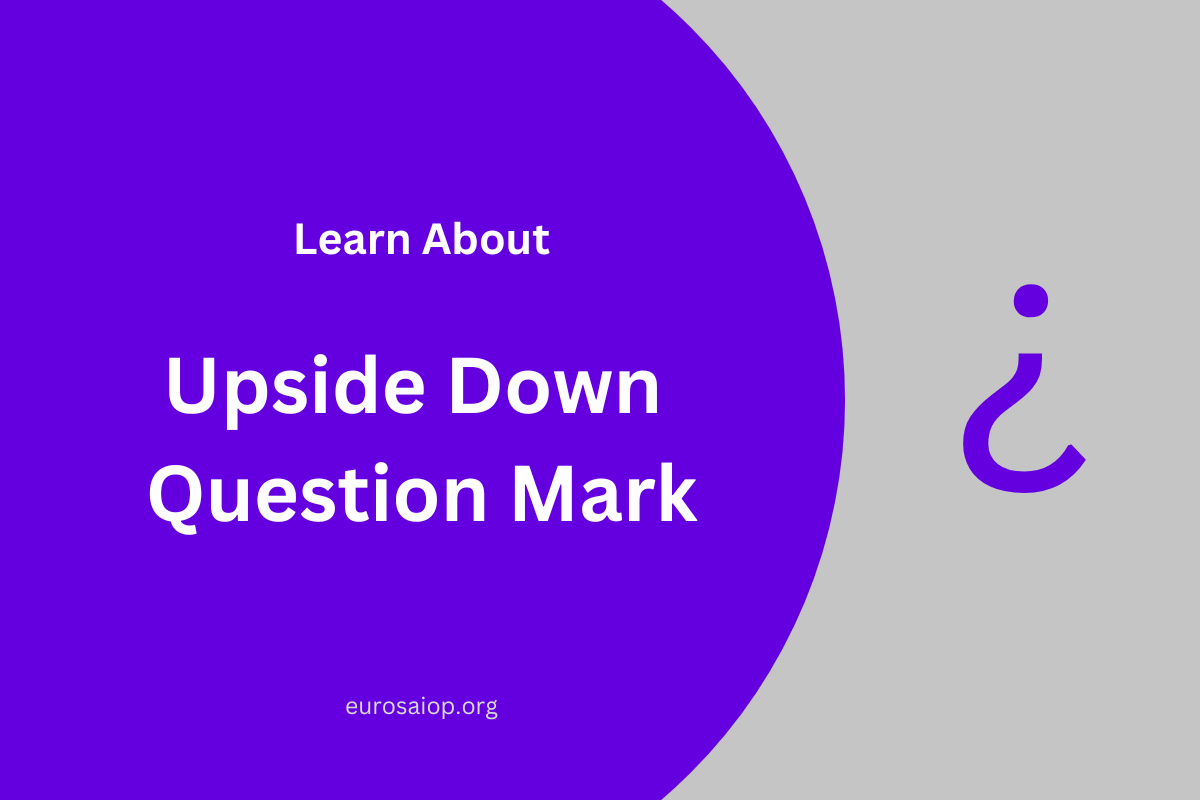The inverted question mark (¿) and the regular question mark (?) both indicate a question. Certain languages, like Spanish, use them differently.
Easy Copy and Paste the Inverted Question Mark
Click the button below and copy the upside-down question mark easily:
How They’re Used
Languages like Spanish place the inverted question mark at the start of a question. The regular one comes at the end. In English, we only place the regular question mark at the end. The structure of the sentence shows us it’s a question.
Languages like Spanish, Catalan, and Galician make it easier to recognize a question early. This occurs due to the way people use these marks.
Note: Some people also call it ‘backwards question mark’.
The Regular vs. Inverted Question Mark
The inverted question mark (¿) and the regular one (?) both indicate a question. Writers use them differently. Spanish writers place the inverted mark at the beginning. The regular one goes at the end.
For example, in Spanish, writers write ¿Cómo te llamas? (What is your name?). In English, we write What is your name?
This small change lets readers know immediately that a question is coming. It is especially helpful in long or complex sentences.
Examples:
- Spanish: ¿Vas al cine mañana? (Are you going to the movies tomorrow?)
- English: Are you going to the movies tomorrow?
- Spanish: ¿Dónde está el baño? (Where is the bathroom?)
- English: Where is the bathroom?
The inverted question mark helps Spanish readers recognize a question immediately. It makes reading easier.
A Bit of History
The inverted question mark (¿) has an interesting background, particularly in languages like Spanish. Juan de Iriarte, a Spanish grammarian, introduced it in the 18th century. He wanted to help readers identify questions early in sentences. English doesn’t adopt this mark because sentence structure shows a question.
Examples:
- Spanish: ¿Cómo estás? (How are you?)
- English: How are you?
Most languages don’t use the inverted question mark. Spanish, Catalan, and Galician still find it useful.
Inverted Punctuation Marks
Languages like Spanish use inverted punctuation marks, like the inverted question mark (¿) and the inverted exclamation mark (¡). These marks let readers recognize a question or exclamation early.
Formal Spanish grammar values these marks. The Royal Spanish Academy standardized their use in the 18th century to enhance clarity.
Examples:
- Spanish: ¡Qué sorpresa verte aquí! (What a surprise to see you here!)
- Spanish: ¿Qué pasa? (What’s happening?)
- Spanish: ¡No lo puedo creer! (I can’t believe it!)
- Interrobang: What are you doing‽
Writers use these marks to make questions or exclamations clear. They clarify the meaning from the start.
Meaning and Purpose
The inverted question mark (¿) helps readers recognize a question immediately in languages like Spanish. This makes reading smoother.
Languages like Spanish, where sentence structure may complicate meaning, avoid confusion with the inverted question mark. Readers struggle less with identifying questions because of this helpful mark.
This small mark improves clarity. It creates a smoother reading experience.
Examples:
- Spanish: ¿Cómo estás? (How are you?)
- Spanish: ¿De verdad? (Really?)
- Spanish: ¿Dónde está el baño? (Where is the bathroom?)
The inverted question mark ensures Spanish readers instantly recognize questions.
How Can You Type the Inverted Question Mark (¿) on Different Devices?
Typing an inverted question mark (¿) becomes simple once you know how. Use the following steps for different devices:
On a PC (Windows):
- Hold the Alt key.
- Type 0191 on the number pad.
- Release the Alt key to insert the inverted question mark (¿).
Please note that you have to use the number pad and not the number on the Function keys.
On a Mac:
- Press Option + Shift + ?. This type the inverted question mark (¿).
On an iPhone or iPad:
- Enable the Spanish keyboard in Settings > General > Keyboard.
- Tap the Key. The inverted question mark (¿) will appear.
On an Android:
- Enable the Spanish Keyboard in Settings > Language & Input.
- Tap and hold the? Key The inverted question mark (¿) will appear.
Conclusion
Languages like Spanish use the inverted question mark (¿) to indicate the start of a question. This makes reading easier and avoids confusion. While English and many other languages don’t adopt this mark, Spanish, Catalan, and Galician consider it essential.
Knowing how to use this mark clarifies sentences. It is especially useful when sentences are long or complex. This small punctuation mark significantly improves how we understand questions.

Leave a Reply